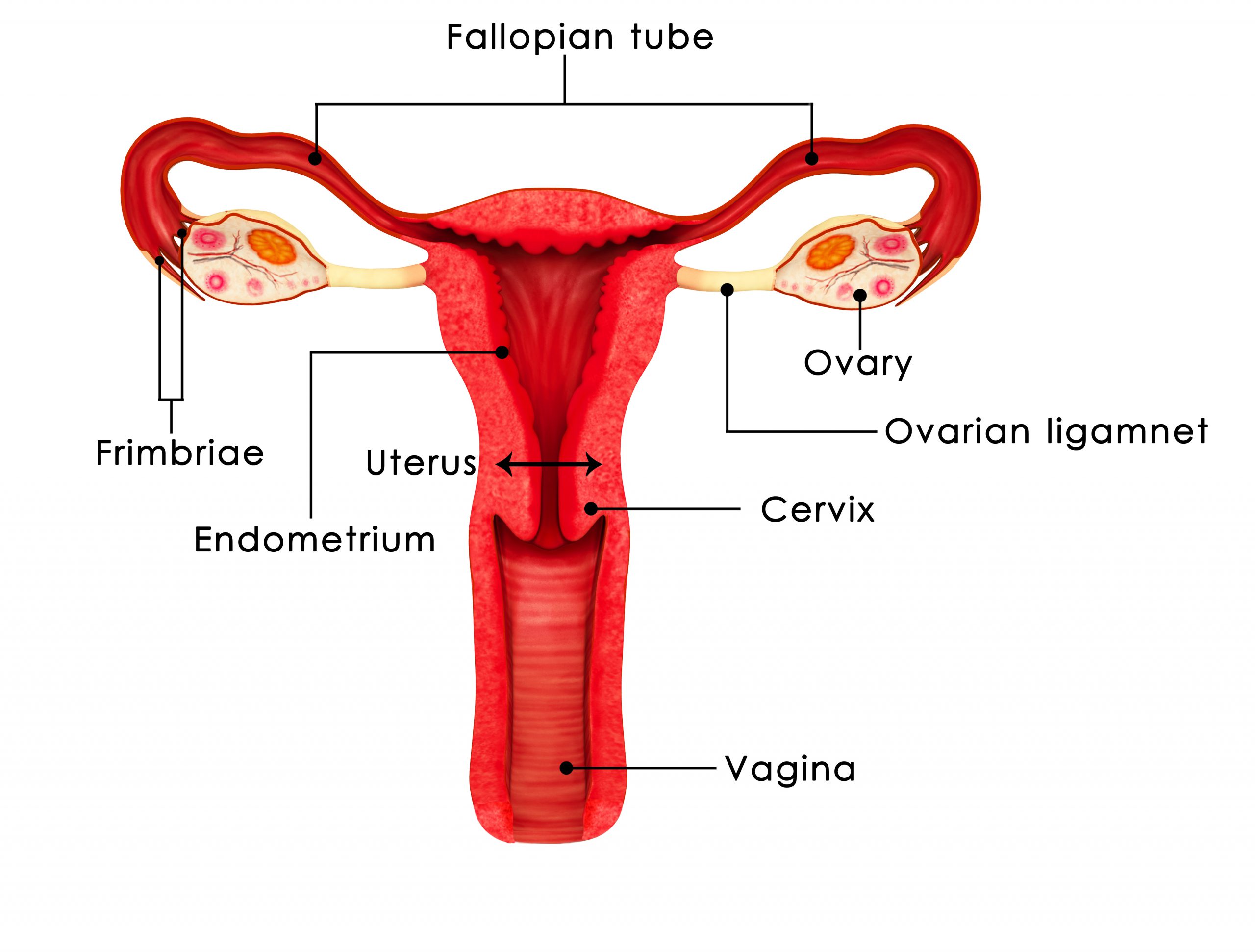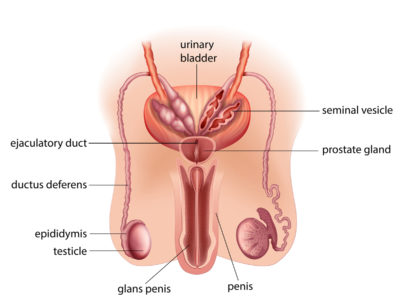The Reproductive System
The reproductive system overview
- The reproductive system is a collection of organs and a network of hormone production that work together to create life.
- The male reproductive system includes the testes (which produce sperm), penis, epididymis, vas deferens, ejaculatory ducts and urethra.
- The female reproductive system consists of the ovaries (which produce eggs or oocytes), fallopian tubes, uterus, cervix, vagina and vulva.
- Both the male and female reproductive systems must be functioning properly for a couple to conceive naturally. A problem with the structure or function of either reproductive system can cause infertility.
What does the reproductive system do?
The reproductive system is a collection of organs and a network of hormone production in men and women that enable a man to impregnate a woman who gives birth to a child. During conception, a sperm cell from the man fuses with an egg cell in the woman, creating a fertilized egg (embryo) that implants and grows in the uterus during pregnancy.
Abnormalities or damage to reproductive organs and malfunction of the hormone production and delivery system that governs reproduction are common causes of infertility in men and women.
How the brain works as part of the reproductive system
Brain centers play a key role in the regulation and control of the reproductive hormones and system. Hormones are chemical messengers that affect the metabolism of other cells with receptors for the hormone. Hormones may be produced in one part of the body and travel in the blood to another part of the body to initiate an action.
The reproductive brain centers are made up of the hypothalamus, located in the central part of the brain, and the pituitary gland, located at the base of the brain just below the hypothalamus. Additional higher brain regions influence activity in the hypothalamus.
The hypothalamus produces gonadotropin-releasing hormone (GnRH) to regulate the production and release of FSH (follicle-stimulating hormone) and LH (luteinizing hormone) in the pituitary gland. FSH and LH are the two gonadotropic hormones involved in both male and female reproduction. The rate and magnitude of GnRH pulses from the hypothalamus regulate the release of FSH and LH from the pituitary gland.
Reproductive hormones in women
The menstrual cycle is regulated by the complex interactions of hormones produced in the hypothalamus, pituitary and ovary. FSH released from the pituitary stimulates the ovarian follicles to begin maturation and growth. Follicles are sac-like structures in the ovary containing eggs. As the follicle and egg develops, cells within the follicle produce estrogen. Follicle cells produce another hormone called inhibin that circulates back to the hypothalamus and pituitary to decrease the release of FSH.
The production of estrogen continues to rise under the influence of FSH as the follicle matures and increases in size. When the follicle is mature, maximum production of estrogen occurs and this signals a rapid rise in LH from the pituitary gland.
LH, along with the estrogen produced by the ovaries, helps in the maturation process of the egg. LH also triggers ovulation – the release of a mature egg from one of the follicles in the ovary. After ovulation, the follicle turns into a different structure, the corpus luteum, which produces progesterone.
Progesterone acts on the uterine lining (endometrium) causing it to thicken in preparation for implantation. Progesterone is essential for implantation and pregnancy. If implantation does not occur, the thickened endometrium will break down and be lost with menstrual bleeding.
Reproductive hormones in men
In men, FSH from the pituitary gland stimulates the testes to produce sperm by a process known as spermatogenesis. LH from the pituitary gland signals the testes to produce testosterone, which enhances sperm maturation. Testosterone is the primary male sex hormone.
Key functions & parts of the female reproductive system
The female reproductive system is designed to:
- Produce the eggs necessary for reproduction, called the ova (ovum is singular for one egg) or oocytes
- Incubate and nourish a fertilized egg until it is fully developed
- Produce female sex hormones that maintain the reproductive cycle
 The female reproductive organs include:
The female reproductive organs include:
- Ovaries — The ovaries are two small, oval-shaped glands located on either side of the uterus. They are home to the female sex cells, called eggs, and they also produce estrogen, the female sex hormone.
- Fallopian tubes — The fallopian tubes are narrow tunnels for a fertilized egg to make its way down to the uterus. Damage or blockage to the fallopian tubes — called tubal disease — can sometimes cause fertility problems. Learn more about common fertility problems.
- Uterus — The uterus is a hollow, pear-shaped organ located in a woman’s lower abdomen, between the bladder and the rectum. It is also called the “womb” and holds the fetus during pregnancy. Each month, the uterus develops a lining (the endometrium) that is rich in nutrients. The reproductive purpose of this lining is to provide nourishment for a developing fetus. Uterine abnormalities, such as fibroids or endometriosis, may cause infertility by interfering with egg fertilization or embryo implantation and development.
- Cervix — The cervix is the lower, narrow part of the uterus, located between the bladder and rectum. It forms a canal that opens to the vagina. Often called the neck or entrance to the womb, the cervix lets menstrual blood out and semen into the uterus. Growths in the cervix called polyps can sometimes affect the fertilization or embryo growth process.
- Vagina — The vagina, also known as the birth canal, joins the cervix (the lower part of uterus) to the outside of the body.
- Vulva — This is the external portion of the female genital organs.
Concerned about your reproductive health? Make an appointment with one of our reproductive endocrinologists.
Key functions & parts of the male reproductive system
The male reproductive system performs the following functions:
- Produces, maintains and transports sperm (the male reproductive cells) and protective fluid (semen)
- Discharges sperm within the female reproductive tract during sex
- Produces and secretes male sex hormones responsible for maintaining the male reproductive system
 Unlike in the female reproductive system, most male reproductive organs are not located internally. They include:
Unlike in the female reproductive system, most male reproductive organs are not located internally. They include:
- Penis — The penis is made up of two parts, the shaft and the head. The urethral opening at the tip of the penis delivers sperm into the vagina during sexual intercourse.
- Scrotum — The scrotum is the sac-like organ hanging behind and below the penis. It contains the testicles (also called testes), as well as many nerves and blood vessels.
- Testicles (testes) — The testes (oval organs that lie in the scrotum) are the primary male reproductive organ and are responsible for testosterone and sperm production.
- Epididymis — The epididymis is a C-shaped tube that rests on the backside of each testicle. It transports and stores sperm cells that are produced in the testes. The epididymis also brings the sperm to maturity, since the sperm emerging from the testes are immature and incapable of fertilization. During sexual arousal, contractions force the sperm into the vas deferens.
- Ductus (vas) deferens — The vas deferens is a long, muscular tube that travels from the epididymis into the pelvic cavity, to just behind the bladder. The vas deferens transports mature sperm to the urethra, the tube that carries urine or sperm outside of the body, in preparation for ejaculation.
- Ejaculatory ducts — These are formed by the fusion of the vas deferens and the seminal vesicles. The ejaculatory ducts empty into the urethra.
- Urethra — The urethra is the tube that carries urine from the bladder to outside of the body. In males, it has the additional function of ejaculating semen when the man reaches sexual climax. When the penis is erect during sex, the flow of urine is blocked from the urethra, allowing only semen to be ejaculated at climax.
- Other glands — Several glands produce semen or fluid in support of the reproductive process. The seminal vesicle produces fructose that provides energy to the sperm as they seek an egg. The prostate gland also produces a fluid that helps the sperm move more quickly through the female reproductive system. Another set of glands called bulbourethral, or sometimes Cowper’s glands, makes a fluid for protecting the sperm on its way through the urethra.
